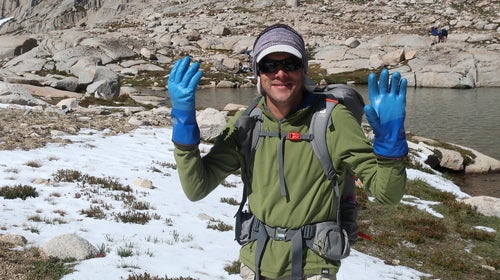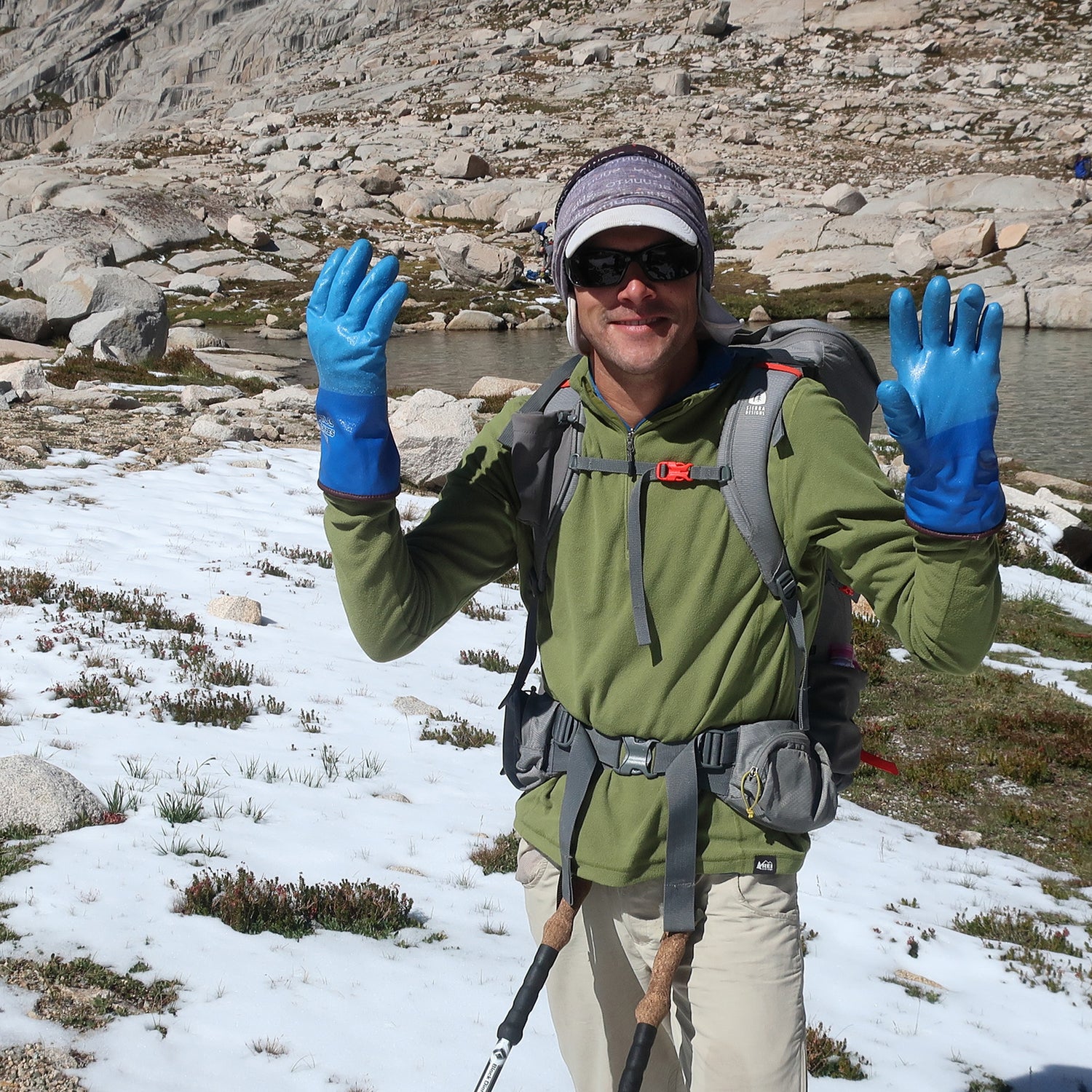While hiking and running in cool and wet or cold and wet conditions, I struggle to keep my hands warm and dry—and thus functional. The situation is exacerbated by a cool core temp, like during this year’s , when I pushed through a rainstorm at 10,000 feet with temperatures in the 40s, wearing just a singlet, shorts, and rain shell. But it also happens even if I’m otherwise toasty warm.
The conventional solution to keeping hands warm and dry is a two-piece system:
-
Liner glove, made from polyester or merino wool, to insulate and buffer moisture.
-
Shell glove or mitt, made from waterproof/breathable fabric, to provide resistance to precipitation and wind.
It’s easy to find a high-quality liner. I’m a longtime user of the , but other acceptable options are available from Smartwool, Manzella, Outdoor Research, and more.
The trouble is the shell. First, options are limited. In the traditional retail channel, I know of just two: the and . The selection is improved by cottage brands like Borah Gear, Luke’s Ultralight, Mountain Laurel Designs, and ZPacks, but their products are not available from local retailers.
Second, all those options are fundamentally flawed. The performance of mitts made with traditional waterproof/breathable fabric is undermined by the fabric’s DWR finish, which is degraded by abrasion and body oils. Another fabric option, Dyneema Composite Fabric (aka Cuben Fiber), isn’t abrasion-resistant enough. And mitts without seam tape require DIY seam sealing, which in my experience is not all that reliable.
Third, these gloves and mitts are pricey, with retailing from $40 to $80. I’m willing to buy expensive gear, but I’d rather pay less for gear that performs even better. Enter the Showa gloves.
Review: Showa 281 and 282 Gloves
Prompted by my speculation about , a reader from Japan suggested I try the and , which are primarily designed for workers like fishermen and lobstermen, whose hands are frequently in contact with cold air, cold water, and ice. But the reader claimed the gloves are also popular with hikers and backcountry skiers.
The defining feature of the 281 and 282 is the textured microporous polyurethane shell, branded as Temres. It’s waterproof and breathable, but the structure seems more like Columbia’s Outdry Extreme, which does not rely on DWR and, in my experience, remains waterproof even after long-term use. The stuff is somewhat breathable, too: On recent one- to two-hour runs in subfreezing temperatures, I noticed no moisture accumulation inside the glove.
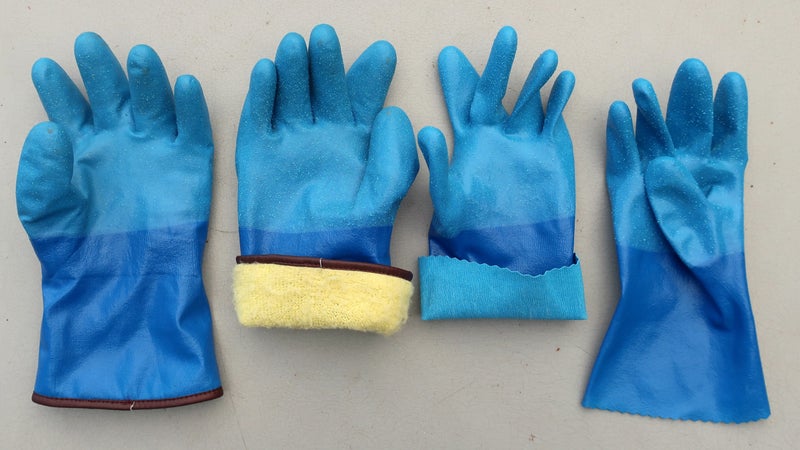
Showa 281 vs. 282
The 281 is only a shell. The interior is lightly textured, so it’s not as grabby or sticky as gloves made of pure latex, nitrile, or rubber. It works for mild conditions when I simply need resistance to wind (say, running bike errands), moisture (cleaning the gutters), or abrasion (cleaning up a pile of razor-sharp brass weather stripping after a DIY door project). If paired with a liner, the 281 can be used in cooler temperatures.
The 282 combines that shell with an acrylic liner, which adds warmth and buffers moisture, particularly perspiration. On its own, the 282 is comparable in warmth to the 281-plus-liner system. When paired with a thin liner, it has been comfortable on long runs in light snow with temperatures in the mid-teens.
The 281 can be purchased for $11, and the 282 for about $20. Compared with $40 to 80 for conventional rain mitts, that makes them a steal.
So what’s better, the 281 or 282? For cold temperatures, the 282 is the clear winner. For milder conditions, a 281-plus-liner system is more versatile. I generally prefer layers over all-in-one equivalents, but handwear is the exception: It’s easy to cool down and air out your hand by simply taking off the glove. If you want to buy just one, get the 282 in a size you can wear with a liner underneath. They’ll be perfect if it’s cold. If it’s just cool and wet, bring the 282 shell and leave the liner at home.
Fit Guide
Local availability of the 281 and 282 seems limited, so you’ll probably have to buy online before you can try them on. I’ll share my sizing experience to help.
My Hand Size:
-
Length: 8.25 inches from wrist to tip of middle finger, plus 0.125 inches for the glove liner.
-
Width: 8.25 inches around the palm, plus 0.25 inches for glove liner.
-
Middle finger: 3.375 inches (3 3/8) from base to tip.
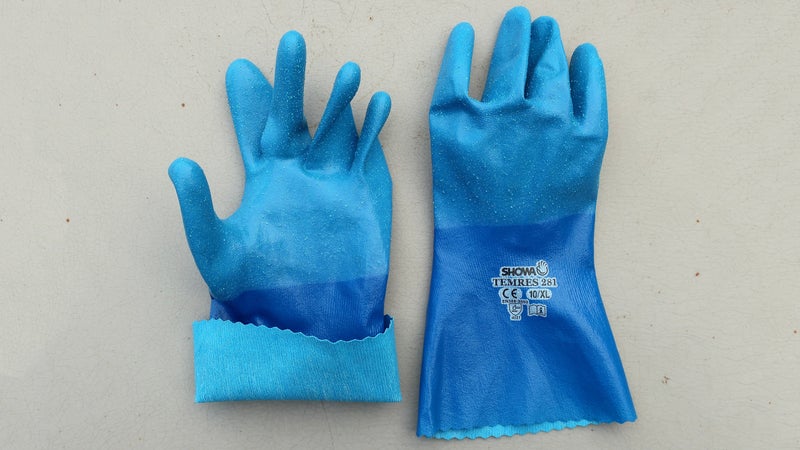
The 281:
-
Large fits snugly when worn without a liner, providing excellent dexterity but no layering opportunity. The fingers are too short by about 1/4 inch, which is partly offset by the fabric’s stretch.
-
X-Large is comfortable without a liner, though a bit oversized and clumsy. The fit is about perfect with my liners.
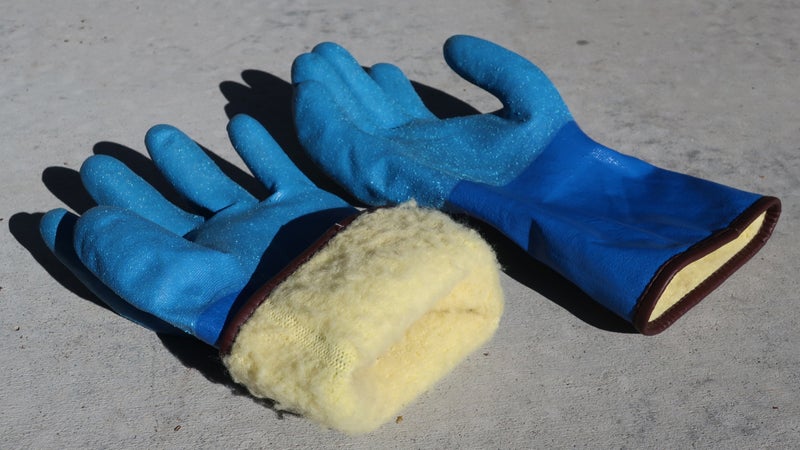
The 282:
-
Large fits very well when worn barehanded, although I’d like the fingers to be a smidge longer. When paired with the Duraglove liner, the Large is too restrictive.
-
X-Large is a bit clumsy when worn barehanded, but doable. The fit is excellent when worn with the Duraglove liner.
Room for Improvement
The Showa 281 and 282 are not optimized for outdoor use, although in fairness they were not intended for these applications. If Showa is listening, here are some humble suggestions:
- Change the color. The “Smurf blue” attracts attention, and not in a good way.
- Add a wrist cinch to minimize drafts, keep out moisture, and reduce the girth of the wrist cuff so it can be more easily shingled underneath a shell jacket.
- Improve the durability of the acrylic liner, which tends to pill quickly and has started to delaminate after a few weeks in the field.
- Make an unlined mitt with the Temres material. Mitts are warmer than gloves, and overall I’d like to pick my own liner.
The Bottom Line
The Showa 281 and 282 offer worthy outdoor performance from an unlikely source. Don’t discount them for working around the yard or scraping your windshield, either. They’re imperfect, but until I find something better for the same price, they get my vote for hiking, running, biking, and skiing in cool or cold temperatures, particularly when it’s wet.
